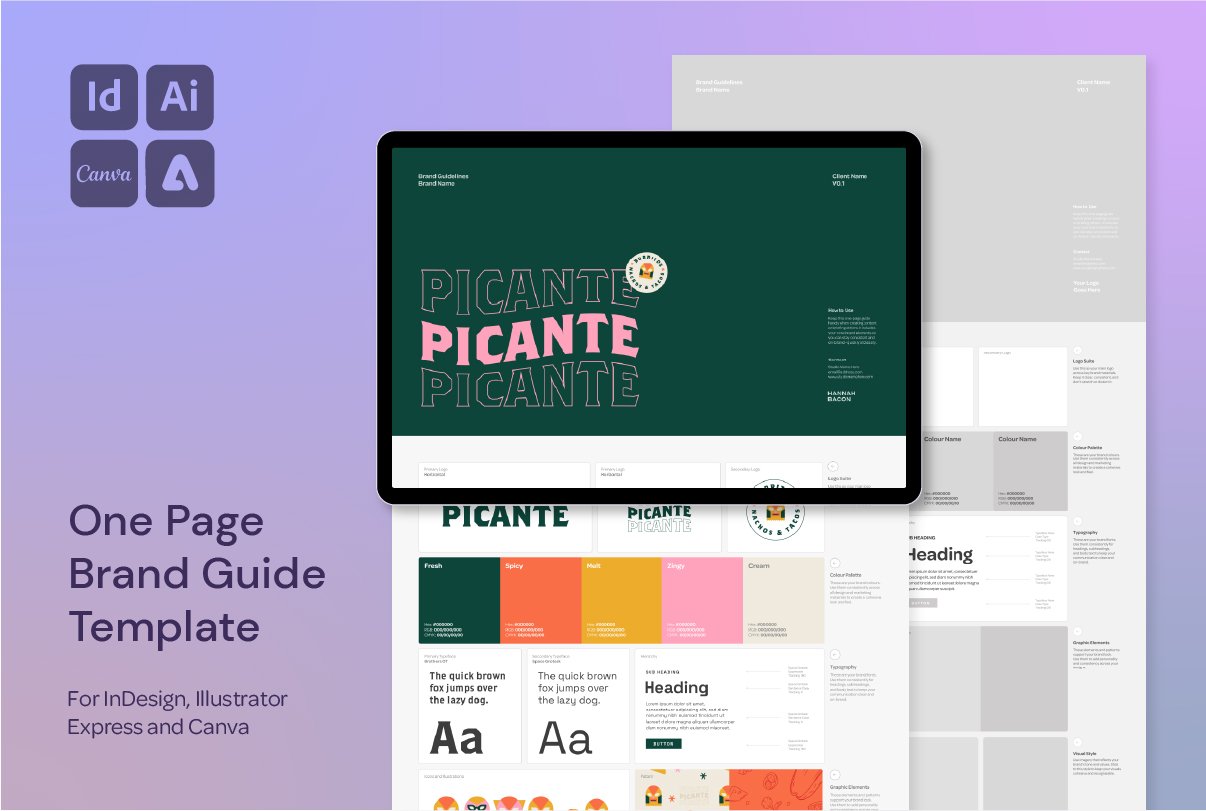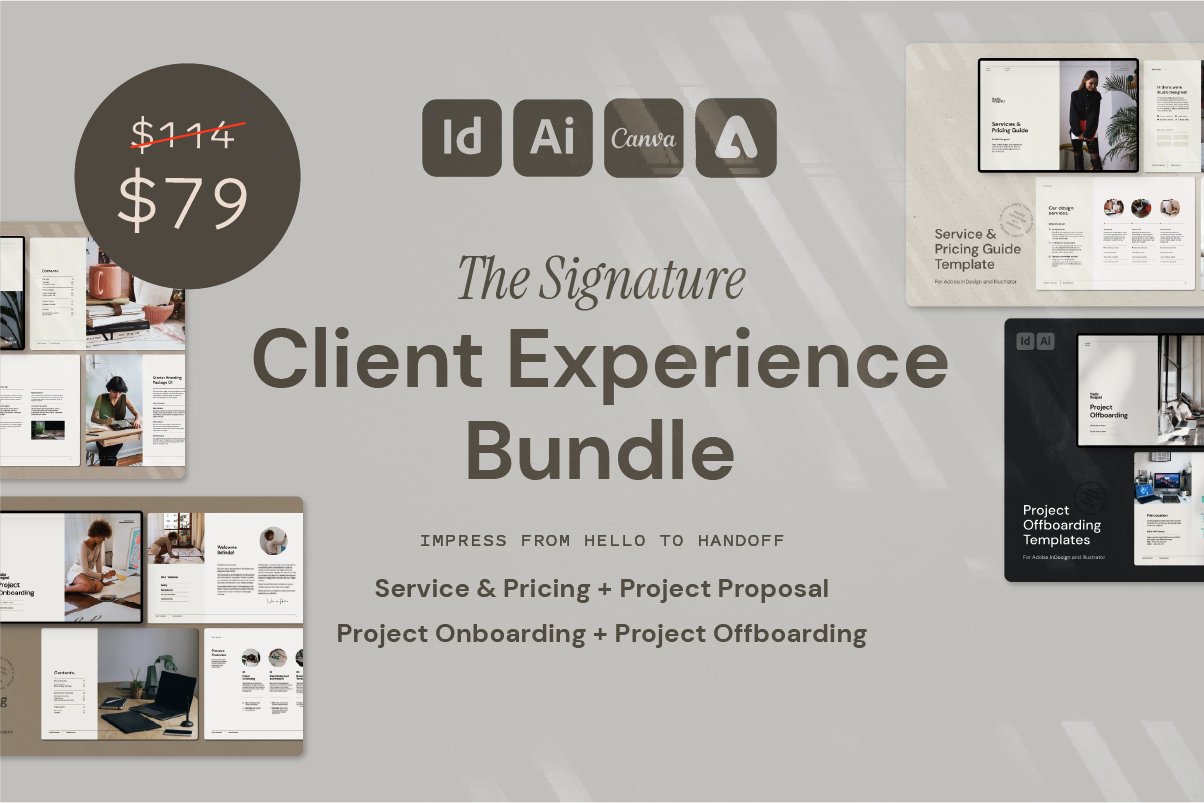What I Learned From Surveying 100+ Designers: Honest Feedback on My Templates and Business
What I Learned from Asking My Audience for Honest Feedback (and Giving Away over $2700 AUD of Templates)
Recently, I offered the new One Page Brand Guideline template to anyone who completed a short, anonymous feedback survey. My goal? To stop guessing what my audience wanted and actually ask. Sales had slowed, and I was questioning whether I was still creating the right things, for the right people.
But more than that, I value honesty and community over assumptions and algorithms. I wanted to learn what my audience needed—not just as customers, but as fellow creatives trying to build sustainable design careers.
Here’s what I learned.
Why I Ran the Survey
As a designer who’s stepped back from 1:1 client work to focus more on content and digital products, I was feeling disconnected. I’ve also cut back on social media recently (for reasons I’ll share below), which left a gap in both connection and income.
The survey was my way of reconnecting with my community. I wanted to understand their current needs and challenges, but also check whether I was still heading in the right direction. Offering a free template was my way of saying thank you—and ensuring the process felt mutually beneficial.
Creating Space for Honest Feedback
All responses were anonymous, and I made it clear that honesty was valued over politeness. While I did wonder whether offering a freebie might bias responses positively, I chose not to collect emails or names—because I wanted participants to feel free to be critical if they needed to.
And they were. Kind, but candid.
Who Responded
Most respondents identified as:
Freelancers
Small business owners
In-house designers
In terms of experience:
43% had 3–5 years in business or their current role
29% had 6+ years
Only a few were just starting out
Tools-wise, Adobe Illustrator was the most widely used tool, followed by Canva, Adobe InDesign, and Figma. Many also mentioned using Notion or other digital organisation tools.
Key Takeaway: I was expecting more beginners, but the majority of respondents were fairly experienced—and that changes how I think about the kind of support I should be offering.
What They’re Struggling With
Several themes came up consistently:
Finding clients and maintaining steady work
Designers reported falling into a feast-or-famine cycle, often neglecting their own marketing to serve others.Pricing and confidence
Many questioned how to value their work and price services fairly.
“I know what to do for clients, but not for myself. So I don’t.”
Time and clarity
Streamlining systems, managing energy, setting up a business while working a day job, and even managing health were all mentioned.Marketing themselves
Especially on social media, where the pressure to perform often outweighs the payoff.
One recurring thread was: how do you get clients beyond word of mouth? It’s a question I ask myself, too.
What They Want Help With
The top three areas where people want support:
Growing their business and getting clients
Streamlining their client process
Marketing themselves (especially on social media)
“I’m struggling to find a niche, and feel like I’m supposed to already have one.”
Interestingly, templates, while appreciated, were not the #1 most requested resource. The top resource requests included:
Mini-courses and tutorials
Notion boards and systems
Swipe files and scripts
Feedback on My Work
Here’s where I took a deep breath.
The good news:
People love the quality and clarity of my templates. They’re described as “beautiful,” “straightforward,” and “professional.” Several said my freebies or tutorials had saved them time or helped them get organised.
“I love your templates. They are easy to customise and look beautiful!”
“The design was straightforward and easy to use.”
But there were thoughtful critiques too:
Some templates felt too complex, especially the brand strategy workshop.
Others went unused, sitting in a “when I have time” folder.
Some asked for a more plug-and-play experience, especially for invoice templates and admin tools.
“I downloaded the template, but it went into my ‘when I have time’ folder.”
“I’d love a version that’s more plug-and-play. The complexity leads to overthinking.”
There’s clearly an appetite for follow-up guides and walkthroughs to help people implement what they’ve downloaded.
Honest Thoughts on the Industry
One respondent shared:
“So many design mentors just tell you what you should do—your content actually feels real.”
They also pointed out that too often, the goal seems to be getting a sale—not offering real help. That struck a chord with me. I don’t want to be part of an industry that creates self-doubt. I want to create clarity, not confusion.
Where this leads me in the future…
Here’s what I’m prioritising, based on what I learned:
More real-world examples and walkthroughs of templates
Mini-course development — and asking for your help choosing topics
Expanding availability across platforms (e.g., Canva, Adobe Express)
Sharing my journey more openly — including the messy parts
Reassessing my passive income offerings and rethinking how I support those just starting out
And things in my back pocket for the future:
Beginner-friendly and simplified versions of existing templates
A Notion client portal template that I’d love to beta test
Reflections on Listening
This process reminded me that feedback isn’t just a business tool—it’s a relational one. I’ve made assumptions in the past about who my audience is, and what they want. This helped correct course.
“Please keep sharing the behind-the-scenes—how do you actually do all of this with kids?”
The answer: I don’t. And I want to talk more about that. I want to share the tools that help, the books that have shifted my mindset, and how I’ve learned to prioritise based on values—not hustle.
It also reminded me of why I do this: to offer value, build community, and share the hard-won knowledge I’ve gained over the years—even if it doesn’t always lead directly to a sale.
Thanks for Being Here
If you took the time to fill out the survey: thank you. Your insights are helping shape what I create next. If you didn’t get a chance but want to offer feedback, my inbox is always open.
This isn’t just about templates. It’s about doing meaningful work, in a sustainable way, with and for other designers.
Want More Time-Saving Tools and Freebies?
This process is just one of the techniques I share across my design templates and digital assets, made especially for designers who want professional results—without starting from scratch every time.





